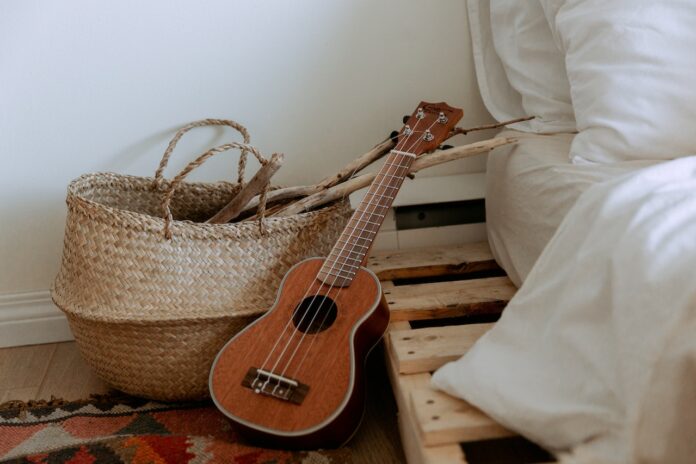Why is the Autoharp so Uncommon Compared to the Guitar?
The autoharp and the guitar are both stringed instruments, but there is a noticeable difference in their popularity. While the guitar is widely recognized and played by musicians of all genres, the autoharp remains relatively uncommon. What factors contribute to this stark contrast?
One reason for the autoharp’s relative obscurity compared to the guitar lies in its unique design and sound. Unlike the guitar, which allows for intricate fingerpicking and versatile playing styles, the autoharp is primarily known for its chordal accompaniment capabilities. Its characteristic feature of pre-set chord bars limits its melodic range and may make it less appealing to musicians seeking a broader sonic palette.
Another factor could be attributed to historical context and cultural influence. The guitar has a long-standing history in various musical traditions worldwide, ranging from classical music to folk, rock, and pop genres. In contrast, while the autoharp has been around since the late 19th century, it hasn’t gained as much traction or widespread recognition outside specific niches such as traditional folk music.
Challenges in Learning to Play the Autoharp
Learning to play the autoharp can present a unique set of challenges for aspiring musicians. While it may not be as widely known or popular as the guitar, there are several reasons why mastering this instrument can be a bit more perplexing. Let’s explore some of these challenges:
- Unique String Configuration: One of the primary differences between the autoharp and guitar lies in their string configuration. The autoharp features a series of chord bars that, when pressed, dampen certain strings while allowing others to ring out. This intricate setup requires players to have a solid understanding of chord progressions and finger placement. Unlike the guitar, where chords are formed by pressing down specific frets, playing the right chords on an autoharp demands precision and accuracy.
- Complex Strumming Techniques: Another challenge faced by beginner autoharp players is mastering the art of strumming. Due to its design, strumming techniques on an autoharp differ from those used on a guitar. The absence of individual strings means that you cannot employ traditional picking or plucking methods commonly used on guitars. Instead, you’ll need to rely on rhythmic strumming techniques across all strings simultaneously using either your fingers or a pick.
- Limited Educational Resources: Compared to other instruments like the guitar, finding comprehensive educational resources dedicated specifically to learning the autoharp can be quite challenging. While there are instructional books and online tutorials available, they may not offer the same abundance and variety as those for popular instruments like guitars or pianos.
- Niche Community and Performance Opportunities: The relative uncommonness of the autoharp compared to guitars also affects performance opportunities for players. It’s less likely that you’ll find open mic nights or jam sessions specifically geared towards autoharps in many areas. As such, connecting with fellow musicians who share your passion for this instrument can be more challenging, limiting the collaborative and learning experiences that can enhance your skills.
- Limited Genre Versatility: The autoharp is often associated with folk or traditional music genres, which may limit its appeal to musicians seeking a broader range of musical styles. While it’s certainly possible to explore different genres on the autoharp, the instrument’s unique sound and chord configuration may require additional effort and experimentation to adapt it to various musical genres successfully.
In conclusion, despite its uncommonness compared to the guitar, learning to play the autoharp presents its own set of challenges. From understanding chord configurations to developing strumming techniques, aspiring musicians must navigate through a variety of obstacles.
Limited Availability of Autoharp Teachers
When it comes to the autoharp, one of the reasons why it is so uncommon compared to the guitar is the limited availability of qualified teachers. Unlike the guitar, which has a vast number of instructors worldwide, finding someone who specializes in teaching autoharp can be quite challenging. This scarcity makes it difficult for aspiring players to receive proper guidance and instruction.
The niche nature of the autoharp contributes to this limited availability of teachers. While guitars are widely popular and found in various genres of music, the autoharp remains relatively niche, primarily associated with folk or traditional music. As a result, fewer musicians choose to become proficient in playing and teaching this unique instrument.
Moreover, another factor affecting the scarcity of autoharp teachers is its complex nature. The autoharp requires specialized knowledge and techniques that may not be commonly known among musicians or educators. Its unique design with chord bars and multiple strings can be intimidating for those unfamiliar with its intricacies. Consequently, many musicians may shy away from attempting to teach an instrument they do not fully understand themselves.
Furthermore, financial considerations also play a role in limiting the availability of autoharp teachers. Since there is less demand for lessons compared to popular instruments like the guitar, instructors may find it less economically viable to specialize in teaching only autoharp. They may opt instead for more mainstream instruments that attract larger student bases.
In conclusion, several factors contribute to the limited availability of autoharp teachers compared to their counterparts for other instruments like the guitar. The niche nature of the instrument, its complexity, and financial considerations all play a significant role in creating this scarcity within the musical education landscape. As a result, individuals interested in learning how to play this unique instrument may face challenges when seeking out qualified instructors who can guide them on their musical journey Lack of Popularity in Mainstream Music



